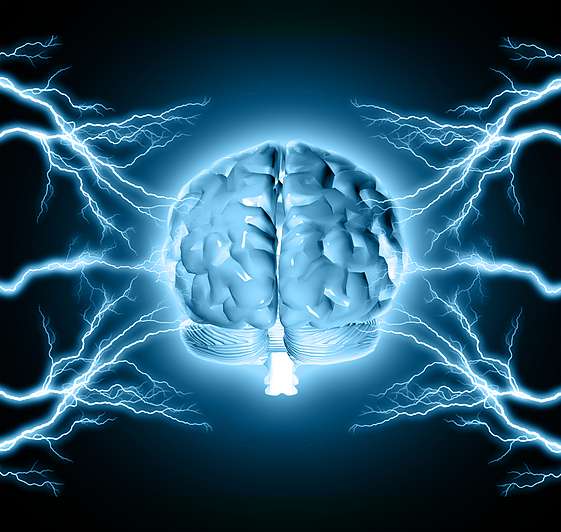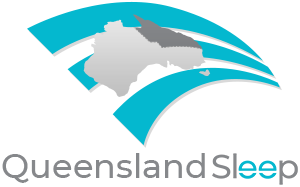The comorbidity of epilepsy and sleep apnea is not uncommon. The diagnosis and treatment of obstructive sleep apneas will improve the prognosis and the quality of life in patients with epilepsy.
Diagnosis and treatment of epilepsy and sleep apnea comorbidity. Expert Rev Neurother. 2017 May;17(5):475-485. doi: 10.1080/14737175.2017.1262259. Epub 2016 Nov 28.Liu F1, Wang X1.a Department of Neurology , The First Affiliated Hospital of Chongqing Medical University, Chongqing Key Laboratory of Neurology , Chongqing , China.

Diagnosis and treatment of epilepsy and sleep apnea comorbidity.
Expert Rev Neurother. 2017 May;17(5):475-485. doi: 10.1080/14737175.2017.1262259. Epub 2016 Nov 28.Liu F1, Wang X1.a Department of Neurology , The First Affiliated Hospital of Chongqing Medical University, Chongqing Key Laboratory of Neurology , Chongqing , China.
The comorbidity of epilepsy and sleep apnea is not uncommon. The diagnosis and treatment of obstructive sleep apneas will improve the prognosis and the quality of life in patients with epilepsy. Areas covered: In this paper, the authors review the pathological link between sleep apnea and epilepsy and systematically analyze the current literature on the diagnosis and treatment of obstructive sleep apnea in patients with epilepsy. This review includes studies retrieved from the PubMed, Embase and Google Scholar databases. Expert commentary: A variety of treatments are available for OSA and epilepsy independently but there are no standards or guidelines for how to implement these treatments for patients who suffer from both disorders. The authors expect that alternative efficient therapies for comorbidity will be explored, which may change the current clinical practice for the management of epileptic patients.
Obstructive sleep apnoea in patients with epilepsy: a meta-analysis.
Sleep Breath. 2017 May;21(2):263-270. doi: 10.1007/s11325-016-1391-3. Epub 2016 Jul 30.Lin Z1, Si Q2, Xiaoyi Z3. 1Department of Neurology, West China Hospital, Sichuan University, Chengdu, 610041, China. 2School of Acupuncture and Tuina, Chengdu University of Traditional Chinese Medicine, Chengdu, China.3Department of Neurology, West China Hospital, Sichuan University, Chengdu, 610041, China. xiaoyizou@scu.edu.cn.
PURPOSE: The aim of this study was to accurately determine the prevalence of obstructive sleep apnoea (OSA) in patients with epilepsy (PWE) and to evaluate the efficacy of seizure control after treating OSA.
METHODS: Articles were identified through a search of both MEDLINE and Embase. The articles were collected and data were extracted independently by two authors. OSA was described using the following terms: Apnoea/hypopnoea index (AHI) and respiratory disturbance index (RDI). The variables were calculated using DerSimonian and Laird’s random-effects model and odds ratio (OR).
RESULTS: The prevalence of mild-to-severe OSA in PWE was determined to be 33.4 % (95 % CI 20.8-46.1 %), and PWE are more susceptible to OSA as compared to healthy controls (OR 2.36; 95 % CI 1.33-4.18). Males were shown to be more susceptible to OSA than females (OR 3.00; 95 % CI 2.25-3.99). The results also indicated that the prevalence of OSA in patients with refractory epilepsy is not higher than the prevalence of OSA in PWE overall (17.5 vs 33.4 %). The prevalence of OSA was not found to be significantly different for different seizure types or in the number of antiepileptic drugs (AEDs). Patients that had been treated with continuous positive airway pressure (CPAP) were shown to have better seizure control than those untreated (OR 5.26; 95 % CI 2.04-13.5).
CONCLUSIONS: The prevalence of OSA in PWE is higher than in the general population. Additionally, the results of our study suggest that CPAP treatment results in a reduction of seizures.
High risk of developing subsequent epilepsy in patients with sleep-disordered breathing.
PLoS One. 2017 Mar 14;12(3):e0173491. doi: 10.1371/journal.pone.0173491.
Harnod T1,2, Wang YC3,4, Lin CL3,4, Tseng CH5,6.
- Department of Neurosurgery, Hualien Tzu Chi General Hospital, Buddhist Tzu Chi Medical Foundation, Hualien, Taiwan.
- College of Medicine, Tzu Chi University, Hualien, Taiwan.
- Management Office for Health Data, China Medical University Hospital, Taichung, Taiwan.
- College of Medicine, China Medical University, Taichung, Taiwan.
- Graduate Institute of Clinical Medical Science and School of Medicine, College of Medicine, China Medical University, Taichung, Taiwan.6Department of Neurology, China Medical University Hospital, Taichung, Taiwan.
PURPOSE: Several reports have demonstrated an association between glaucoma and obstructive sleep apnea (OSA), though the origin of this association remains unknown. In the present study, the influence of OSA and continuous positive airway pressure (CPAP) therapy on intraocular pressure (IOP) and ocular perfusion pressure (OPP) was examined.
PURPOSE: Sleep-disordered breathing (SDB) is often associated with other medical disorders. Whether SDB interacts with other factors for developing subsequent epilepsy remains unclear.
METHODS: This population-based cohort study was conducted using the National Health Insurance Research Database of Taiwan. Patients aged >20 years and diagnosed with SDB between 2000 and 2010 comprised the SDB cohort (n = 138,507), and their data were compared with those of the comparison cohort (n = 138,507). The adjusted hazard ratio (aHR) for epilepsy was calculated using a multivariate Cox proportional hazards model.
RESULTS: The SDB cohort had an increased risk of epilepsy (aHR = 1.50, 95% confidence interval [CI] = 1.36-1.66). The sex-stratified analysis revealed a significant adjusted hazard ratio (aHR) for epilepsy with a 1.51-fold higher risk for female patients, and also a significantly 1.49-fold higher risk for male patients in the SDB cohort. Although epilepsy incidence increased with age in both cohorts, different age groups in the SDB cohort all had a significantly higher risk of developing epilepsy than comparison cohort.
CONCLUSION: This population-based cohort study indicates that patients with SDB are at a high risk of developing subsequent epilepsy, in both sexes and all age groups.
Sleep-disordered breathing and excessive daytime sleepiness in patients with epilepsy – a polysomnographic study. p.reference Harrison W, Pence N, Kovacich S. Indiana University School of Optometry, Cornea and Contact Lens Research Clinic, Bloomington, Indiana, USA. Optometry. 2007 Jul;78(7):352-5.
Neuro Endocrinol Lett. 2016 Sep;37(4):313-317.
Klobucnikova K1, Siarnik P1, Sivakova M1, Kollar B1.11st Department of Neurology, Faculty of Medicine, Comenius University, Bratislava, Slovakia.
OBJECTIVES: Epilepsy and sleep-disordered breathing (SDB) are relatively common disorders. SDB induces repetitive arousals and sleep fragmentation and may cause symptomatic epileptic seizures or hypoxic encephalopathy. Epileptic seizures change sleep architecture with increase of light sleep and reduction of REM sleep, which may lead to central apneas. The aim of this study was to evaluate the relationship between SDB and daytime sleepiness in patients with epilepsy, who underwent polysomnography (PSG) due to problems with breathing during sleep or due to excessive daytime sleepiness.
METHODS: We enrolled 40 patients with epilepsy. Type, etiology of epilepsy and actual antiepileptic therapy was recorded. All of them underwent overnight PSG. Excessive daytime sleepiness (EDS) was assessed by Epworth Sleepiness Scale (ESS).
RESULTS: SDB (apnea-hypopnea index [AHI]<5) was present in 25 patients, 15 patients had no SDB (AHI≥5). EDS was present in 16 patients (40%). ESS significantly correlated with presence of symptomatic epilepsy (r=0.385, p=0.014), presence of SDB (r=0.524, p=0.001), AHI (r=0.416, p=0.003) and duration of REM sleep (r=-0.476, p=0.002). The presence of SDB (beta=0.447, p=0.002) and duration of REM sleep (beta=-0.308, p=0.029) were the only independent variables significantly associated with ESS in regression analysis.
CONCLUSION: SDB has negative influence on quality of sleep and daytime vigility in patients with epilepsy. Sleep fragmentation with the reduction of the REM sleep seems to be the most important mechanism leading to EDS. We suppose that PSG could be beneficial in all patients with epilepsy and EDS.

Temporal lobe epilepsy is a predisposing factor for sleep apnea: A questionnaire study in video-EEG monitoring unit.
Yildiz FG1, Tezer FI2, Saygi S2.
- Institute of Neurological Sciences and Psychiatry, Hacettepe University, Turkey. Electronic address: gokcemy@yahoo.com.
- Department of Neurology, School of Medicine, Hacettepe University, Turkey.
OBJECTIVE: The interaction between epilepsy and sleep is known. It has been shown that patients with epilepsy have more sleep problems than the general population. However, there is no recent study that compares the frequency of sleep disorders in groups with medically refractory temporal lobe epilepsy (TLE) and extratemporal lobe epilepsy (ETLE). The main purpose of this study was to investigate the occurrence of sleep disorders in two subtypes of epilepsy by using sleep questionnaire forms.
METHODS: One hundred and eighty-nine patients, out of 215 who were monitored for refractory epilepsy and were followed by the video-EEG monitoring unit, were divided into a group with TLE and a group with ETLE. The medical outcome study-sleep scale (MOS-SS), Epworth sleepiness scale (ESS), and sleep apnea scale of the sleep disorders questionnaire (SD-SDQ) were completed after admission to the video-EEG monitoring unit. The total scores in the group with TLE and group with ETLE were compared.
RESULTS: Of the patients, TLE was diagnosed in 101 (53.4%) (45 females), and ETLE was diagnosed in 88 (46.6%) (44 females). Comparison of MOS-SS and Epworth sleepiness scale scores in the two subgroups did not reveal significant differences. In the group with TLE, SD-SDQ scores were significantly higher compared to that in the group with ETLE.
CONCLUSION: Patients with temporal lobe epilepsy have higher risk of obstructive sleep apnea (OSA) according to their reported symptoms. Detection of OSA in patients with epilepsy by using questionnaire forms may decrease the risk of ictal or postictal respiratory-related ‘Sudden Unexpected Death in Epilepsy’.
Excessive daytime sleepiness and obstructive sleep apnea in Thai epileptic patients.
J Med Assoc Thai. 2014 Feb;97 Suppl 2:S175-80.
Ruangkana P, Chinvarun Y, Udommongkol C, Chairungsaris P, Nidhinandana S, Suwantamee J, Sithinamsuwan P. p OBJECTIVES: Previous studies suggested that obstructive sleep apnea (OSA) was associated with glaucoma. However, data on this issue are controversial. This study aims to use meta-analysis to determine whether OSA is related to glaucoma.
BACKGROUND: Sleepiness is a common complaint in epilepsy. Also obstructive sleep apnea (OSA) is increasingly detected and would affect the epilepsy prognosis. We aimed to determine the frequency and predictors of sleepiness and OSA in epileptic patients.
MATERIAL AND METHOD: This was a cross-sectional descriptive study using Epworth Sleepiness Scale questionnaire (ESS) and Sleep Apnea scale of the Sleep Disorders Questionnaire (SA-SDQ) to identify excessive daytime sleepiness and OSA in our consecutive epileptic patients in Neurology out-patient clinic.
RESULTS: Overall 113 patients (male 55%) answered a personal survey and completed ESS and SA-SDQ. Mean age was 47 years (range 15-93). Average body mass index (BMI) was 24. Excessive daytime sleepiness (ESS 10) was demonstrated in 37%, and the prevalence of OSA diagnosed by using SA-SDQ was 20% (male 18%, female 22%). OSA were identified 68% among individuals whose BMI of more than 25, which was significant higherfi-equency than in the nomnnal BMI group (32%). The predictors of having OSA were older age and higher BMI. Epworth Sleepiness Scale score was also higher in the OSA group than in non-OSA group.
CONCLUSION: Excessive daytime sleepiness was identified around one third of our epileptic individuals. Twenty percent had met the questionnaire criteria of having OSA. Overweight was the most important and modifiable risk factor of OSA.




